Deep in South Sumatra, on the border of Kerinci Seblat National Park (one of Indonesia’s largest national parks), a young environmental educator named Pungky Nanda Pratama is inspiring indigenous youth to protect and celebrate wildlife and biodiversity. Passionate about education and the value of the natural world, Pungky’s work is impacting change in the minds and hearts of village children, despite the illegal land clearing and illicit wildlife trade that they are confronted with every day.
The children he teaches are learning the importance of rivers, the functions of forests, the interdependence between humans, rivers and forests as well as the many wonders of the unique wildlife that inhabit the area.
For Pungky, there is no time to rest and in addition to his rehabilitation centre for illegally trafficked animals and threatened orchids, Pungky’s Mobile Library provides access to eco-literacy books whilst The Jungle Library Project promotes environmental education.
Pungky is a hero for wildlife and one of the most inspiring young people we have come across. We are delighted to have interviewed him and share his story.
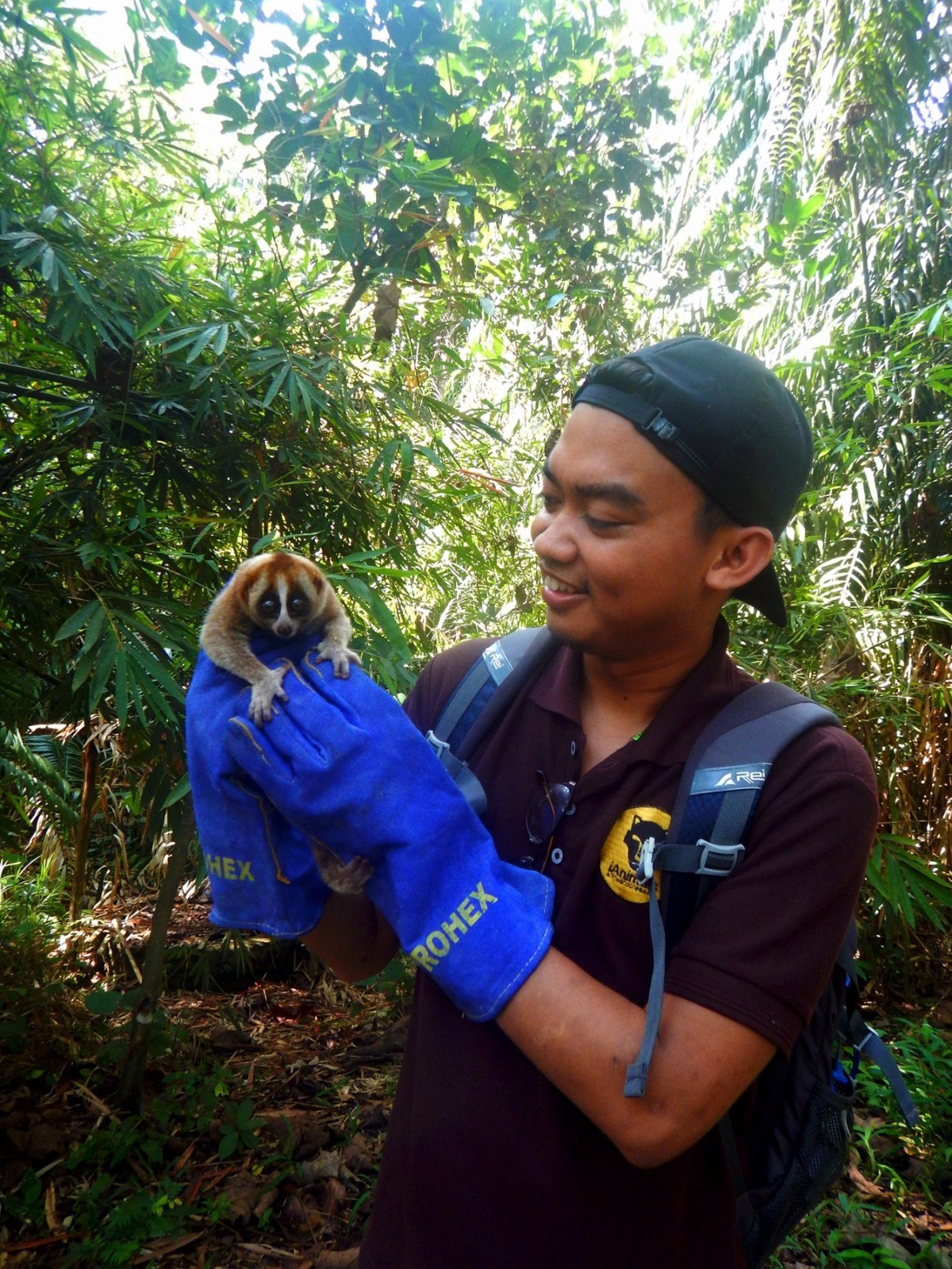
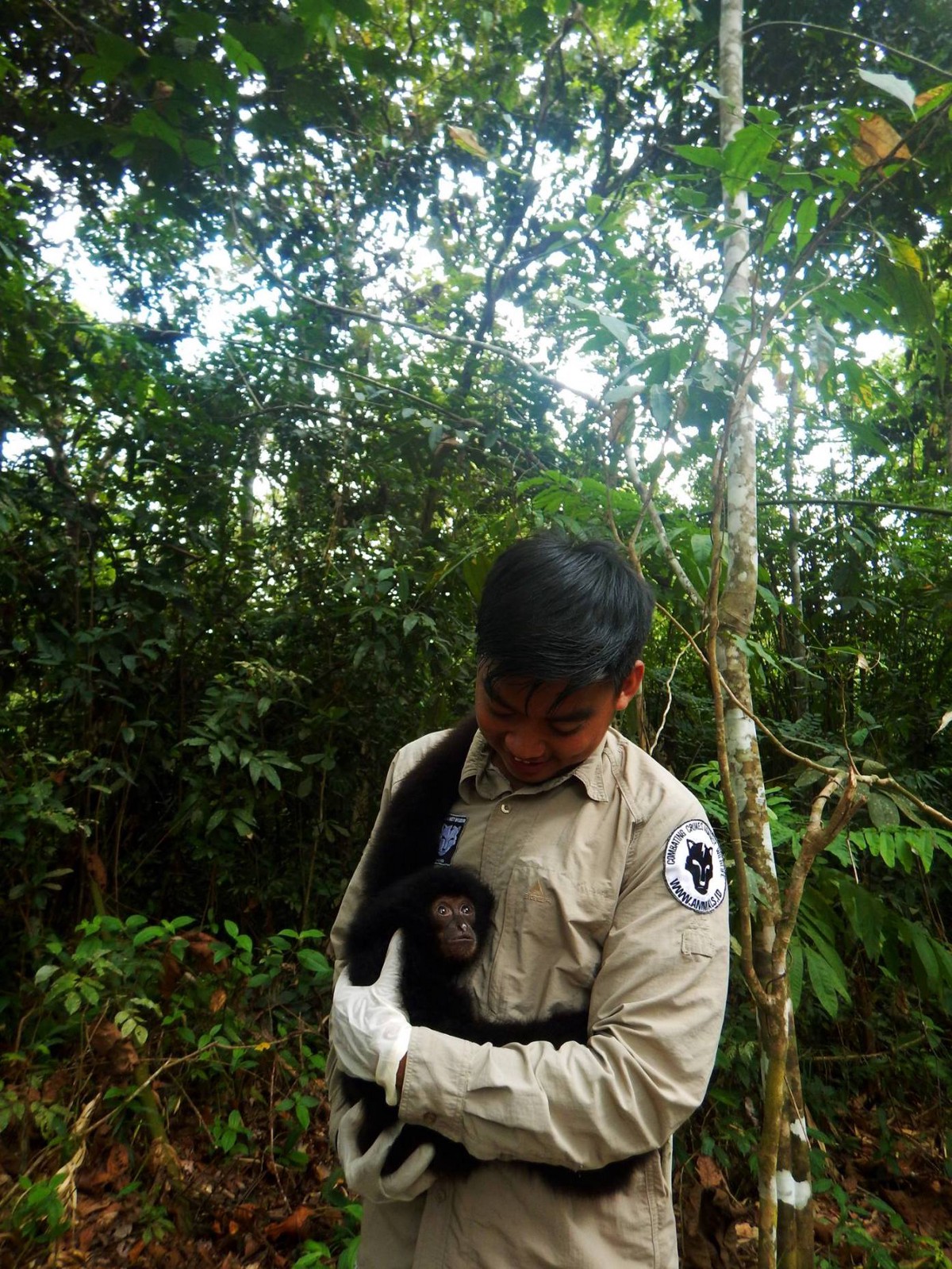
(L) Pungky rescuing a wild slow lories (Nycticebus coucang) that was released back into the wild. (R) Pungky with an orphan siamang gibbons (Symphalangus syndactylus) named “Bobby”. He was rescued by the Biodiversity and Conservation Agency of South Sumatra from pet owners. © Pungky Nanda Pratama
Why did you start teaching environmental education programs to indigenous children here?
It’s like a calling. I feel like Sumatra chose me to be its voice. From the first time I met the indigenous children in the local village, they stole my heart! Their spirit and eagerness to learn about nature and the flora and fauna amazed me and inspired me to work with them.
Why is environmental education is so important here?
Education is key to counteracting some of the destructive practices that threaten the health of Kerinci Seblat National Park. Modernization has pushed people to find increased sources of income, sometimes illegally. The problem with that is these children grow up watching their parents and they begin to take nature for granted.
What is so special about Kerinci Seblat National Park?
Kerinci Seblat is one of largest National Parks in Indonesia, located in four different provinces including South Sumatra, West Sumatra, Bengkulu and Jambi Province. Kerinci Seblat National Park is home to countless magnificent species that need to be protected; including the Sumatran Tiger, Sumatran Elephant, Sun Bear, Pangolin and Malayan Tapir. It is also home to many unique species of flora like Rafflesia and Amorphophallus Titanum living peacefully in the jungle. Not only is it home to these flagship species, but Kerinci Seblat National Park is a mega biodiversity hotspot. Millions of people in Sumatra depend on it for their livelihoods, yet it gets little attention from conservationists, researchers or even government.
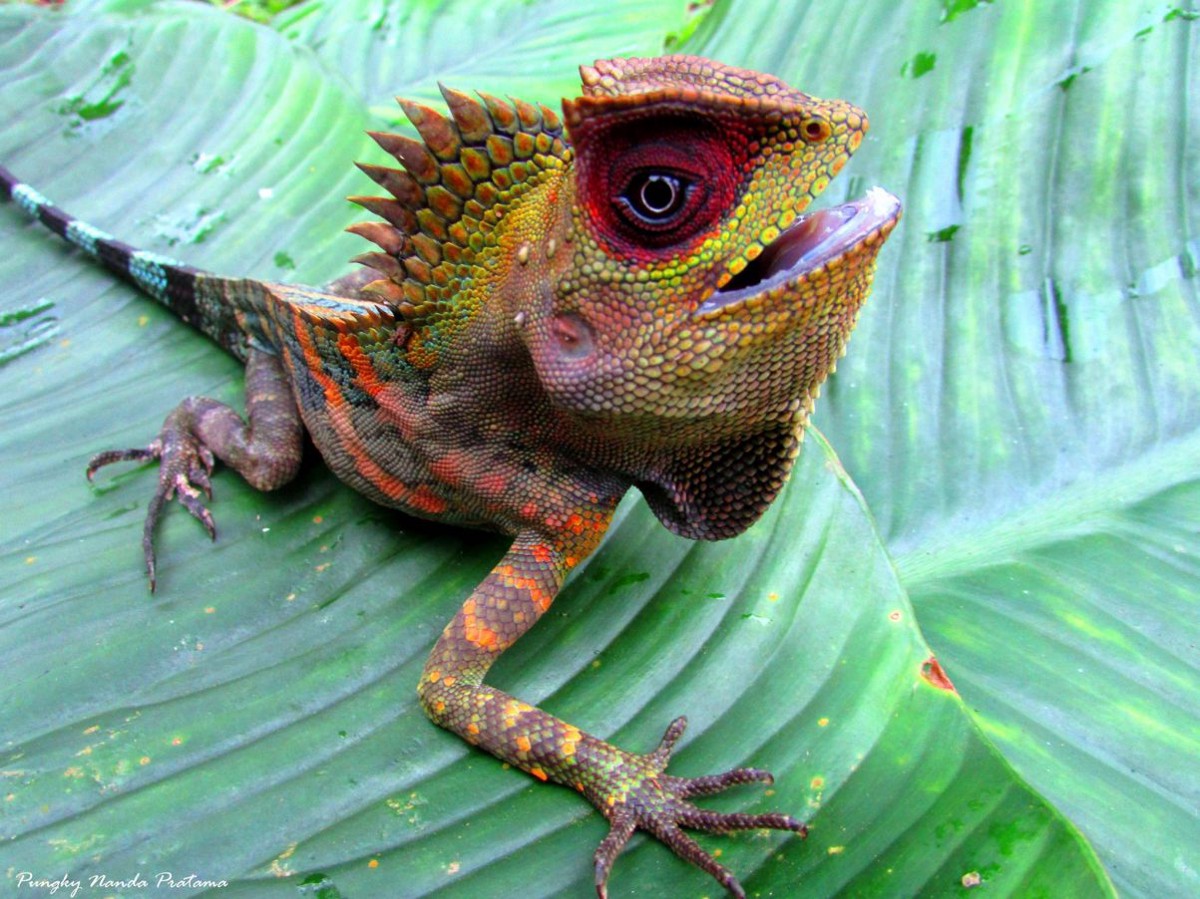
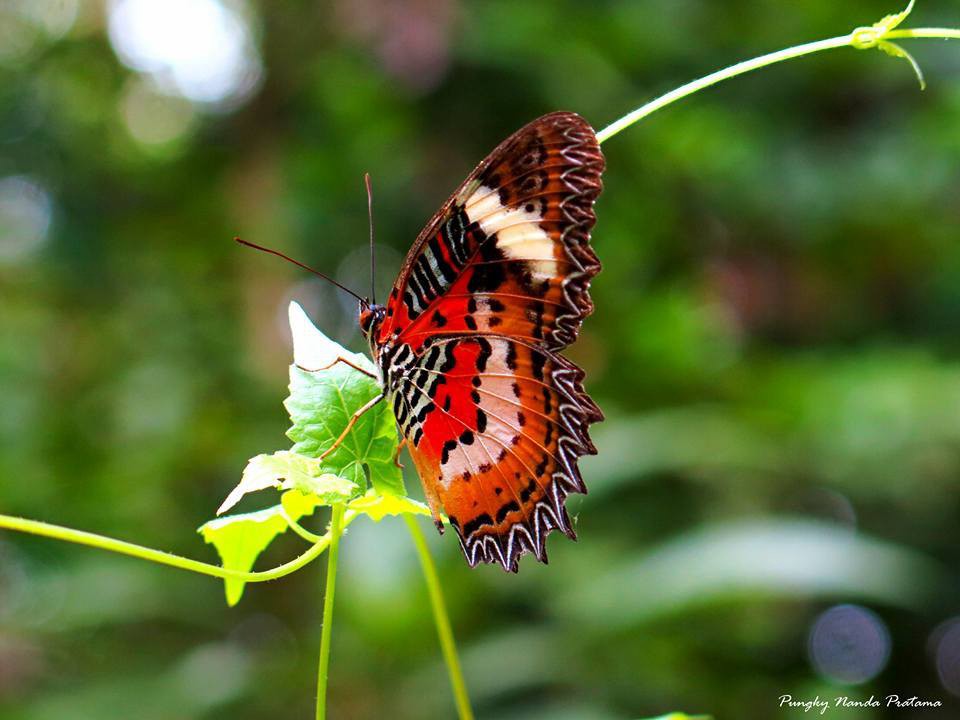
(L) Prehistoric-looking Chameleon Anglehead Lizard (Gonocephalus chamaeleontinus) . (R) The Malay Lacewing (Cethosia hypsea) is a butterfly of the Nymphalidae family native to Indonesia including Sumatra, Java and Kalimantan island. © Pungky Nanda Pratama
What are some challenges facing biodiversity here?
Illegal logging, illegal plantations, illicit wildlife trafficking, poaching and wildfire have brought many species to the brink of the extinction.
What is the Mobile Library and how does it work?
The Mobile Library is a part of an education program that provides access to eco-literacy books provided by Green-Books.org and encourages reading amongst indigenous children. Through the program, many children have learned to read and write, which makes me very happy. I am so thankful to green-books.org for their support.
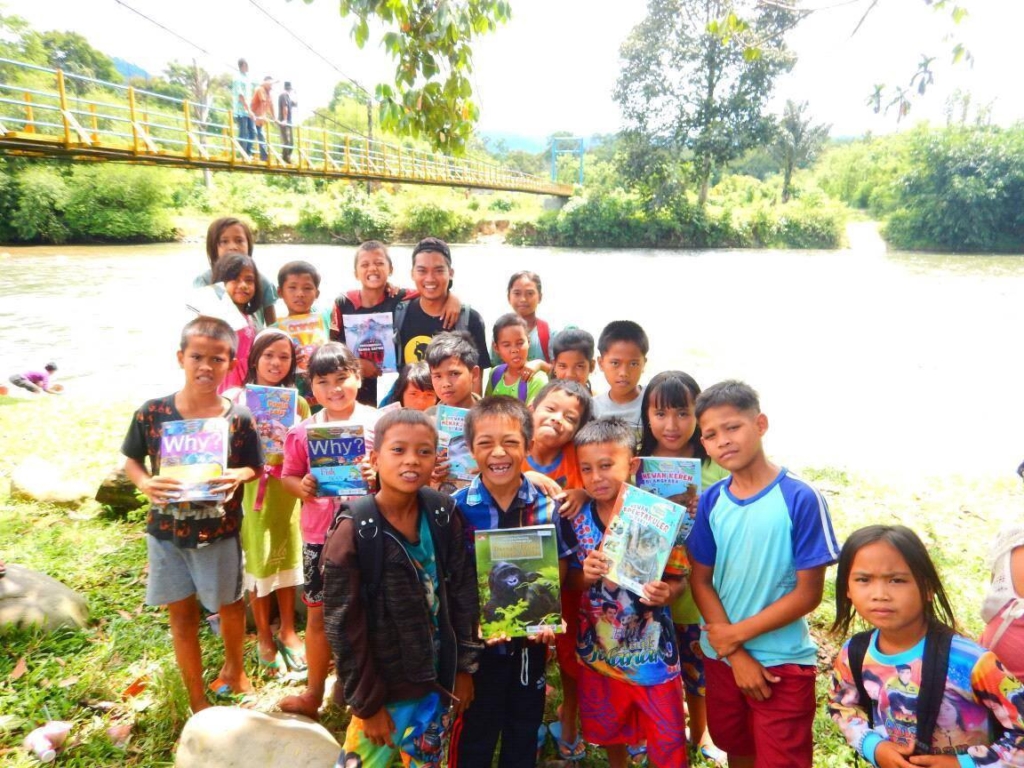
Pungky frequently takes the children down to the river to read. © Pungky Nanda Pratama
And, what is The Jungle Library Project?
The Jungle Library Project promotes environmental education to children living in human-wildlife conflict areas. My friend Joshua Parfitt and I established the Jungle Library Project. We try our best to raise awareness through our stories and photography in South Sumatra. We aim to spread positive vibes to people around the world. Check out The Jungle Library Project.
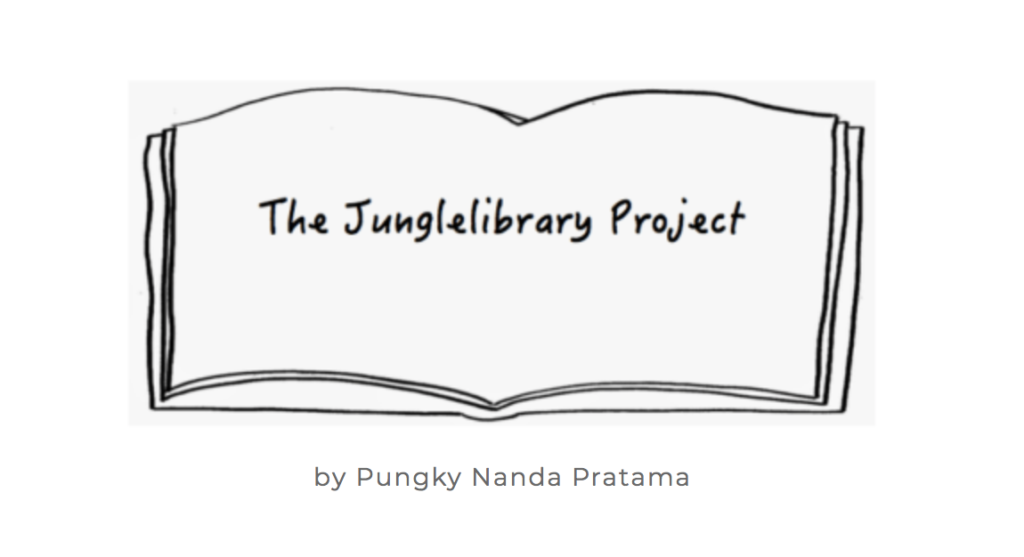
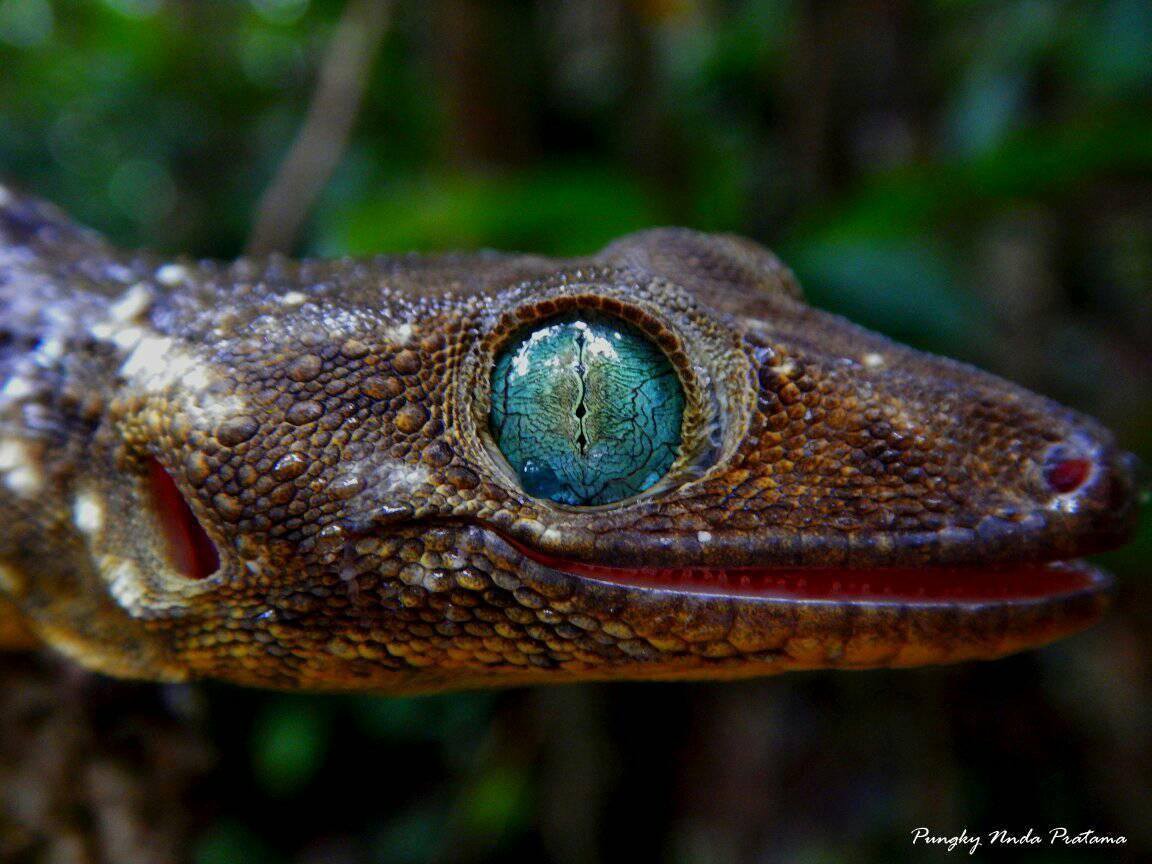
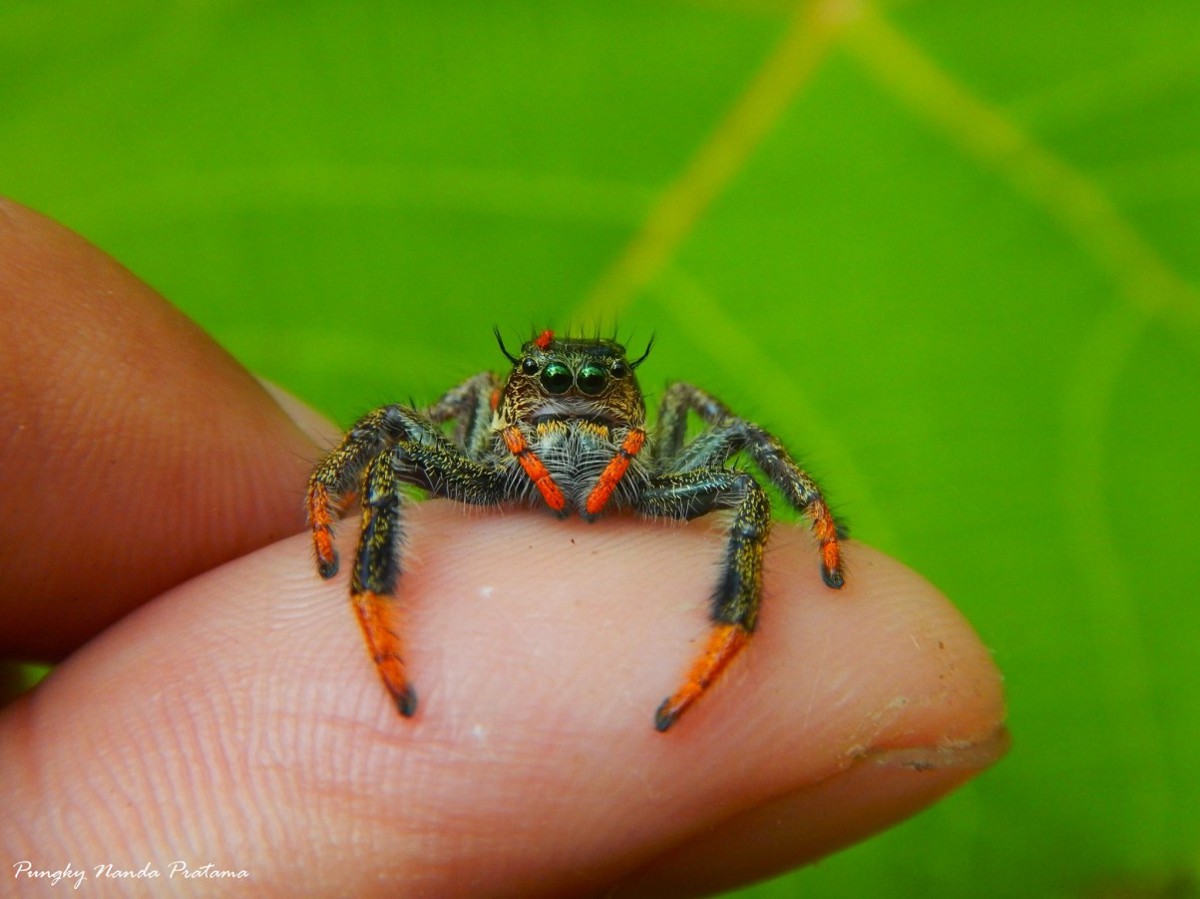
(L) Smith’s Green-Eyed Gecko ( Gekko smithii) and (R) Jumping Spider. © Pungky Nanda Pratama
What methods do you use to teach the kids?
About 40% of what I teach the children is related to the outdoors, the plantations, rivers or areas around the school. I like to use straightforward language and clear examples that can be understood by both young children and government officials, alike. I use local examples of destructive practices that have taken place nearby to enhance understanding.
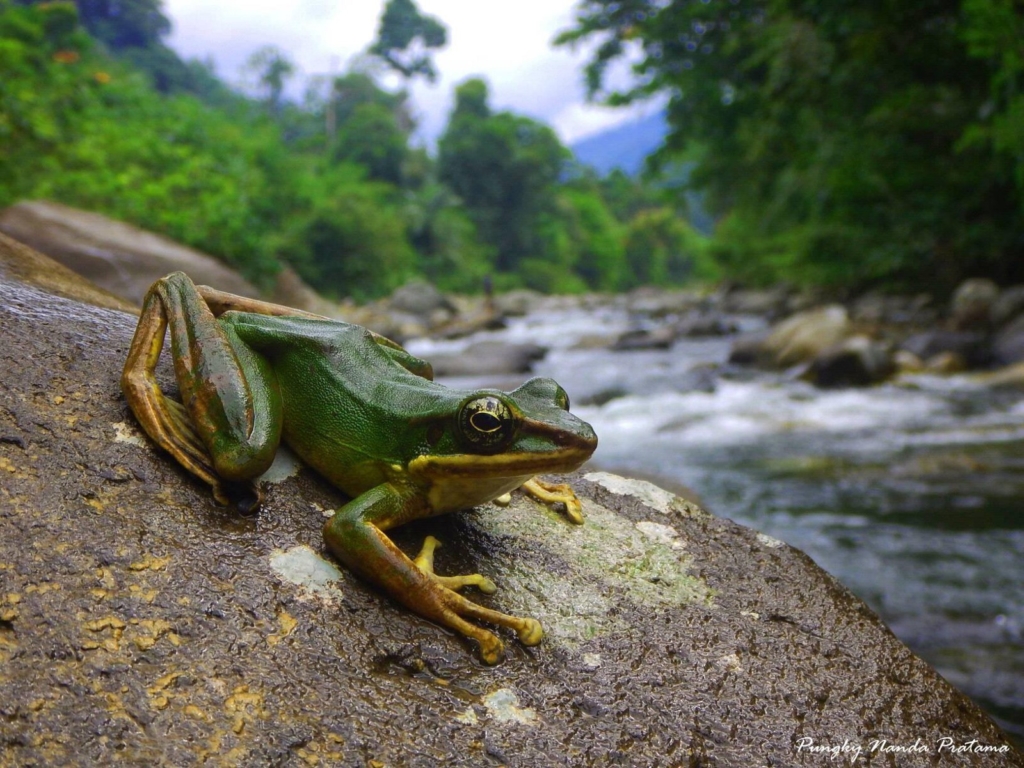
A large female poisonous Rock Frog “Odorrana hossi” along the forest stream inside the Kerinci Seblat National Park. © Pungky Nanda Pratama
How has community responded?
They are very supportive and treat me so well! Not only the villagers, but also the Chief of the Village and even some of Government Agencies support me too. I also received a bunch of bananas and newly harvested rice from some of the kid’s parents as thanks, which made me cry!
What is your favourite Indonesian animal and why?
I love the Rhinoceros Hornbill. I think they are the most magnificent bird on earth. The Rhinoceros Hornbill is not just a bird in Indonesia, they are mythical, and some of the Kalimantan tribes regard the Rhinoceros Hornbill as the deliverer of souls to the afterlife, as well as fidelity symbols.
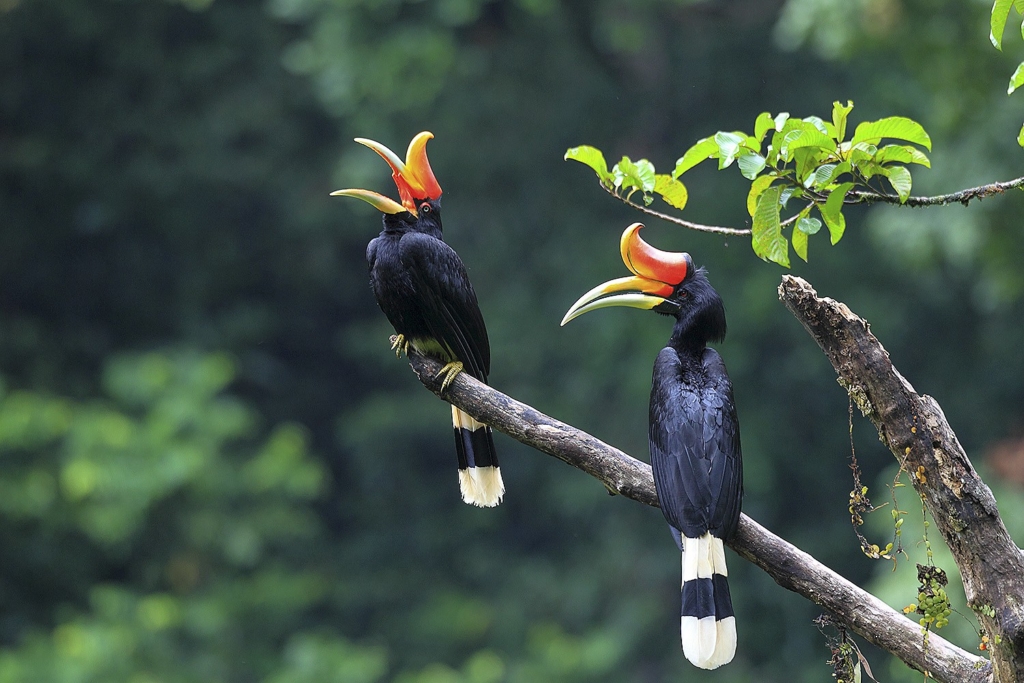
Rhinoceros Hornbill. © Adobe Stock
You also love orchids. Tell us about your work with flowers and plants?
I work with an initiative by the Nature and Biodiversity Conservation Agency of South Sumatra (BKSDAE Sumatra Selatan) where I am busy on a pilot project to preserve native flora outside of protected areas. We have called the project the “Flora Conservation Act” and we aim to reduce local extinction of native flora due to habitat loss. We focus on rescuing plants such as Orchids, Begonia, Aroids and others that grow both on the trees and on the ground around the buffer zone of Kerinci Seblat National Park. Cutting down the trees and burning them as part of land clearing for new plantations creates significant problems and destroys so much native flora. Unfortunately, flora can’t run away from a fire or people.
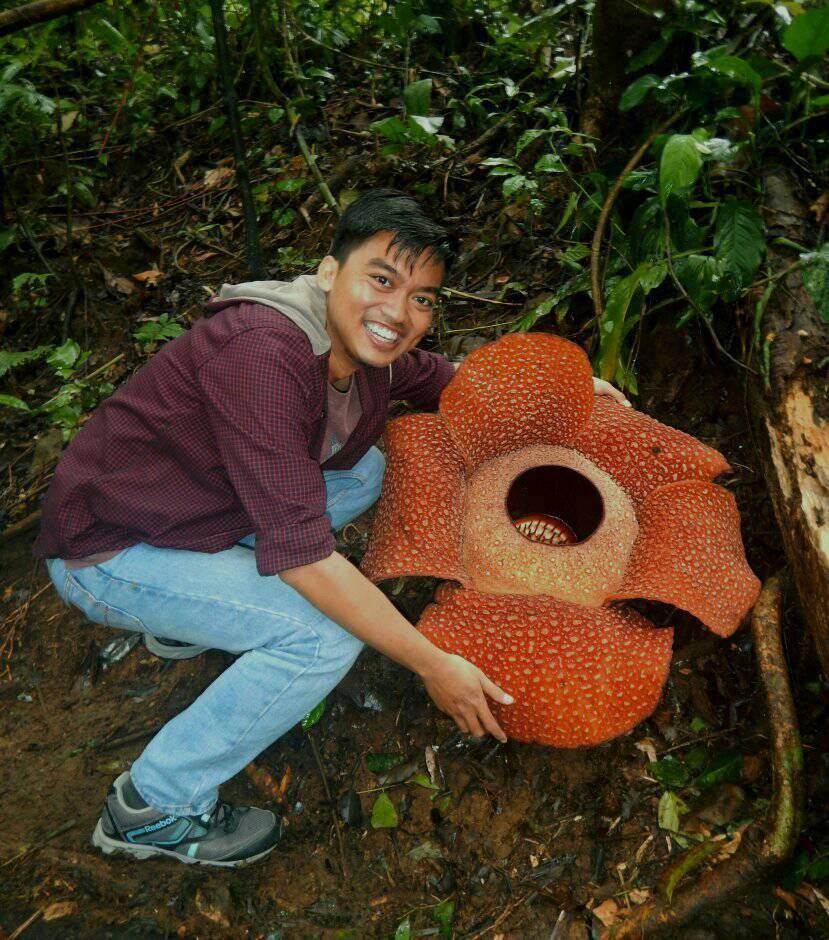
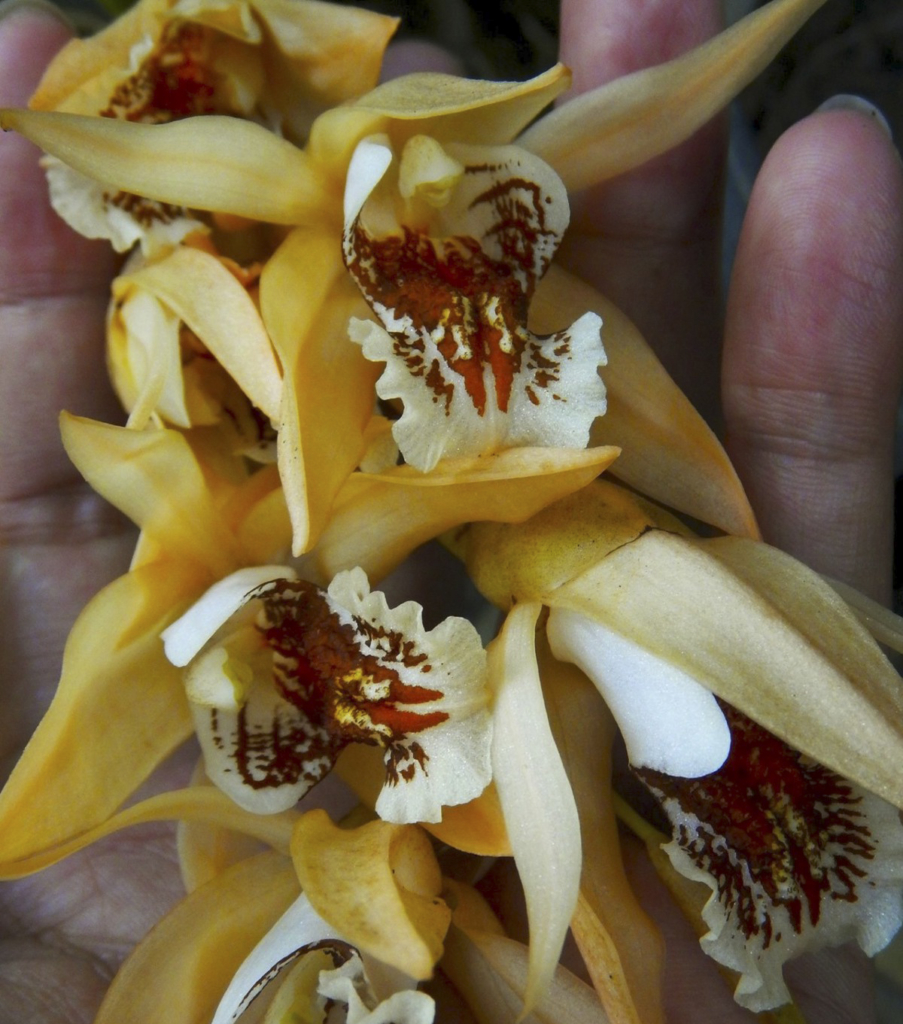
(L) Pungky with a Rafflesia, a parasitic flowering plant fund in Bukit Daun Nature Reserve. (R) A (Coelogyne asperata) orhcid rescued from a rubber tree plantation in the buffer zone Kerinci Seblat National Park. © Pungky Nanda Pratama
You rescue a lot of wildlife. How do you locate these animals?
We rescue wildlife that are often caught in a house or around a plantation area. The Slow Lories ( Nyctecebus coucang) is one of the more rare species I have rescued. They are wild, and therefore can usually be released straight back into the jungle.
What have been some you most rewarding work?
I have many stories that make me feel proud to be an environmental educator in Sumatra. One of the best stories is when I rescued a wild Sumatran Slow Lories (Nyctecebus coucang), who we named Tommy.
I often receive information from the village children when they see someone with an endangered species. It’s priceless information because I can go to the villager who caught the animal, and give him or her precise details on the status of the animal to help them realize what they are doing is the wrong thing. Sometimes the results are not good, but I try my best.
Surprisingly, a young man called me and told me that he had found a Slow Lories in his house in the early morning. He gave me a bag with the Slow Lories and said, “Please release him back to the wild, don’t let him get more stressed.” Our conversation attracted other people and a young man yelled out at us, “ Slow Lories are protected by law and illegal to sell as pets.”
I am so happy when I hear this! Slowly but surely our education programs are changing the mindsets of the villagers about wild animals and this was an indicator. We believe that with education, we can reconnect and encourage people to live in harmony with nature again.
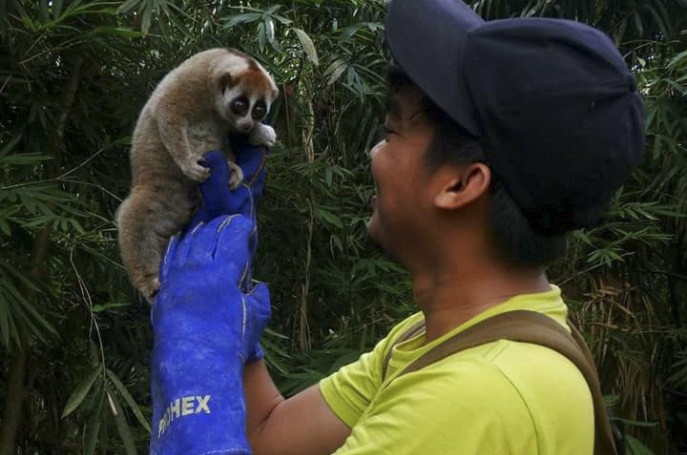
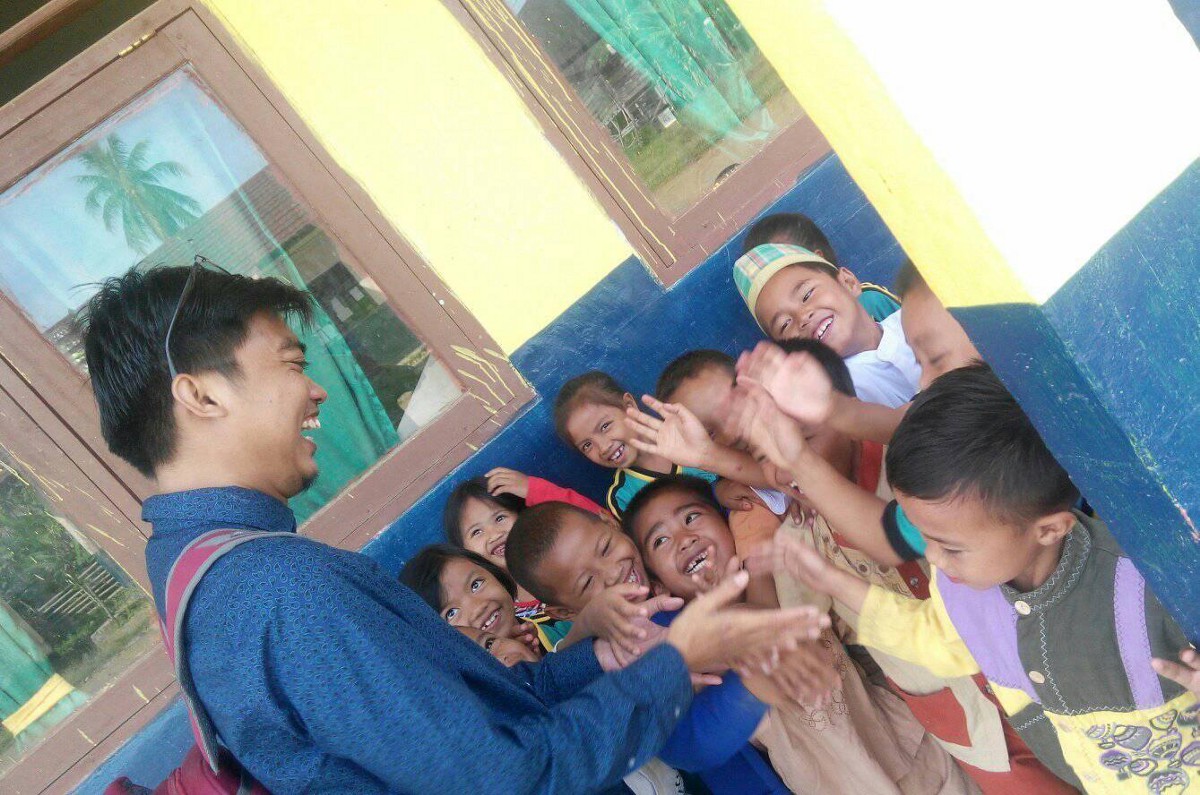
Some of Pungky’s Favourite moments. © Pungky Nanda Pratama
What is the end goal for these kids and the work you are doing?
I have a dream to create an organization that focusses on educating the youth of today, who are living in human-wildlife conflict areas, on the unsustainable practices that threaten the health of the rainforest in Indonesia. I hope that through my photographs, I can raise awareness and introduce unseen but common species of fauna and flora in Indonesia to the world. I want these species to get the attention and protection from the government, researchers and people around the world.
It is difficult to see the results of environmental education immediately. You have to wait until these children have the chance to apply the knowledge they are learning into behaviour as adults. But the goals are, to create nature guardians that will always be heroes of their families, people, nature and biodiversity.
In 2018 Pungky will be teaching in three new primary schools. He will have to walk up to seven hours a day without a motorbike or funding for public transport. If you would like to support Pungky and environmental education in South Sumatra visit his Go Fund Me page https://www.gofundme.com/environmental-education-in-sumatra.
Follow Pungky’s blog on The Jungle Library Project you may also follow him on facebook.
